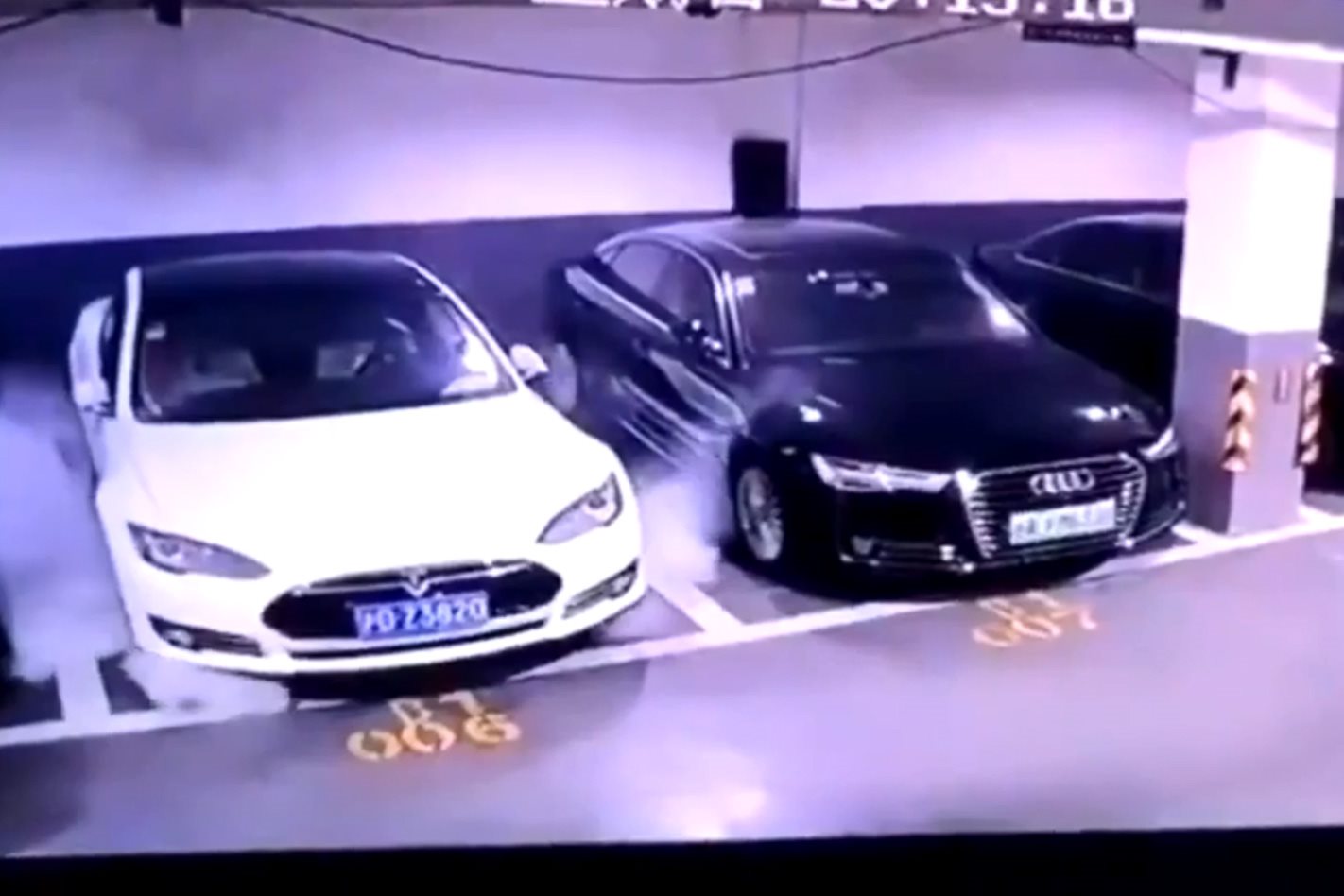UPDATE: New, more detailed explainer published
Since this story was written, we have published a more detailed explainer on the safety efforts and the dangers of EV batteries, compared to petrol and diesel cars. Get the details at the link below.
Electric vehicles are raising all sorts of new problems to deal with, not least of which is how we properly extinguish one when it catches fire. Beyond the plumes of hazardous smoke a chemical fire emits are battery packs that can reignite days after the fire appears to be gone.
Questions over battery-electric vehicle safety have been raised again after a Tesla Model S exploded into flames in a Shanghai underground carpark last weekend. The Model S is one of the vehicles Tesla recently added ‘Dog Mode’ to, enabling owners to lock their pets inside while climate control keeps the critters comfortable.
Caught on film by CCTV and later shared on Chinese social media network Weibo over the weekend, the 22-second footage of the car shows the white first-generation Model S smoking before erupting in flames after a blinding flash. Though it is not the first time a Tesla has caught fire, it is the first record of a Tesla igniting without suffering from any known impact.
There has already been scepticism that the footage could be a hoax. Tesla is hugely popular in China – currently the world’s largest electric vehicle market – and there’s an expanding line of local EV offerings. Tesla issued a statement claiming that no one was injured and that it is investigating the cause of the incident.
“We immediately sent a team on site and we’re supporting local authorities to establish the facts,” it said. “From what we know now, no one was harmed.”
This is not the first time a Tesla has caught fire, with multiple instances of battery-related fires recorded but directly resulting from an accident. The US National Transportation Safety Board investigated a Model S crash last year when the battery reignited days after it was first extinguished. Before that, the US Mountain View Fire Department described a Model X that reignited itself six days after it appeared to be stable as, ‘frankly unstable’.
“In this particular case, six days later, the temperature inside those cells increased to the point of ignition,” said the MVDP. “That’s why the car reignited. You have stored energy that is frankly unstable.”
Tesla recommends using thermal imaging to investigate a battery after it has been in an accident and using ‘large amounts of water’ to extinguish a battery fire:
“If the high voltage battery catches fire, is exposed to high heat, or is bent, twisted, cracked, or breached in any way, use large amounts of water to cool the battery. DO NOT extinguish with a small amount of water. Always establish or request an additional water supply.”
Firewalls inside the battery pack are used to supress the spread of heat. Tesla maintains that its electric vehicles are ten times less likely to ignite than a conventional petrol-engine car.
Electric vehicle fires are not exclusive to Tesla; a BMW i8 on display in a dealership in the Netherlands began smoking last month and fire fighters used the unique method of dunking it in a car-sized bath for 24 hours. The local fire department later said it had to drown the sports car because the batteries are hard to reach.
Then there’s the Rimac Concept One electric supercar that Richard Hammond famously crashed in 2017. Its batteries burnt for five days.
Lithium-ion batteries are at risk of combustion when they generate enough heat to ignite the electrolyte. In most instances, this is caused by a short-circuit which can occur if the battery is damaged, and begins a process known as thermal runaway. Electric vehicles have a number of safety mechanisms such as circuit breakers that initiate when collision detectors are triggered and circulated-coolant to keep temperatures down. But if one or a number of mechanisms fail, the fire can spread rapidly.
In most instances, the batteries are only a cause for concern after an impact. But it still leaves the burning question: are the batteries under our bums safe enough?





